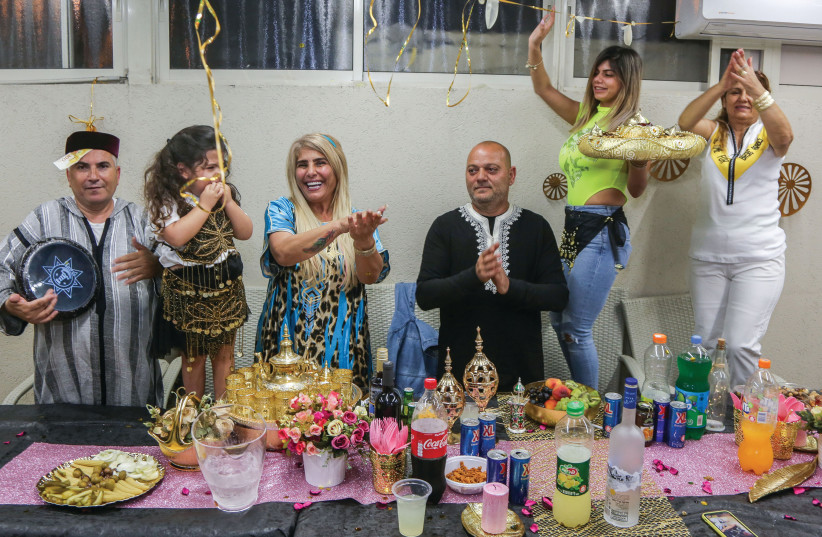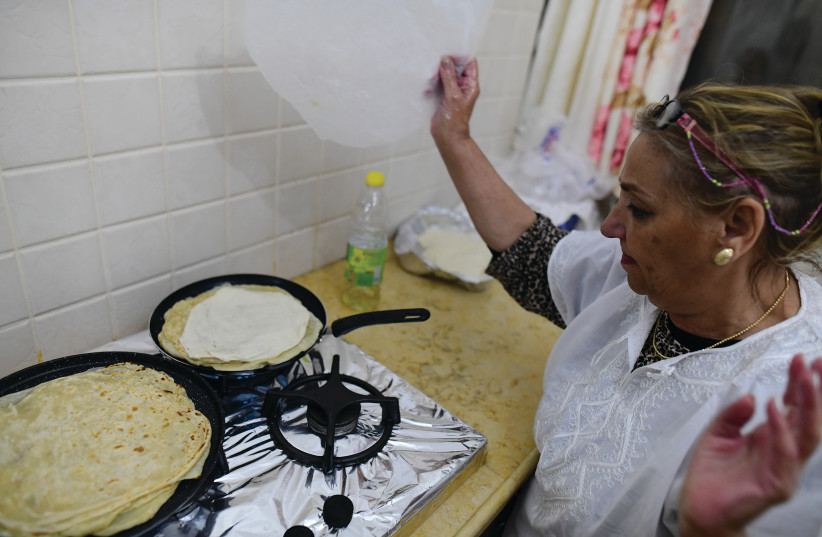There’s a joke about a Moroccan mother who comes across a bag of white powder on the day before Pesach.
“What is this?” she hysterically asks her teenage son.
“It’s cocaine, Mom,” he answers.
“Oh, thank God, I thought it was flour,” she says.
Moroccans Jews, Passover and the Mimouna holiday
Several Moroccans interviewed for this piece said Moroccans are known for being especially vigilant about cleaning the house of chametz before Pesach, often cleaning for weeks and not allowing anyone to eat chametz in the house well before Passover.

And yet, often just an hour after Passover ends, Moroccan households host Mimouna, an open-house party that is most famous for mufleta, a Moroccan crepe spread with butter honey or jam. I dare you to eat just one.
How do they do it? In my home, it takes me at least two days to put the Passover dishes away and after I finish I always find at least one Passover container in my fridge that is no longer kosher for Passover and make myself a note to buy new containers next year.
Levana Kirshenbaum, 74, grew up in Morocco and moved to the US when she was 24, where she later became a restaurant owner and chef. She remembers that as a child her mother would send her out to the small neighborhood grocery store to buy flour as soon as the holiday ended. In some cases, she told The Jerusalem Post, they would give their flour before Passover to their Muslim neighbors to hold it for them during Passover, then return it right after Passover and attend the Mimouna as guests.
She also said that mufleta was one of the few times that dairy was used in the Moroccan kitchen, which is based on meat and parve dishes and salads and the pan used to make the mufletas was washed in the bathroom
“Lunch was the last meal of Passover and then we would put all of our dishes away,” she said. “We weren’t so careful about waiting until the holiday was completely over to prepare.”
Rabbi Rinat Safania-Shwartz, a rabbi of a Reform congregation in Shoham, called Ve’ahavta, who lives on Kibbutz Naan, says that except for mufleta, almost everything else served at Mimouna is kosher for Passover and could be made either before or during the holiday.
“The cookies are all kosher for Passover and made with coconut, marzipan or almonds,” she said. “The jams or the dates you can make during the holiday. And mufleta is easy: it’s just flour and water and salt and oil – lots and lots of oil.”
The uniqueness and importance of Mimouna
PIRCHIT SOKOL, who lives in Efrat, says the jams for Mimouna are unique. Her father, who is a talented cook, makes jam out of eggplant, tomatoes and zucchini. Part of the fun of Mimouna is trying to guess what the jams are made of. The jams are either eaten plain with a spoon or spread on the mufleta.
All of the interviewees said that similar to a brit milah, you don’t invite anyone to Mimouna, just post the details and people show up. You could host dozens of guests or hundreds. The phrase used to welcome people is “tirbahu watis’adu,” (May you succeed and be happy). In the evening after the end of Passover, Mimouna is celebrated in homes and the next day in parks and nature, like the celebration in Gan Sacher that attracts tens of thousands of people.
Kirshenbaum says Mimouna in Morocco is more like a “mufleta crawl” with hundreds of people going to each other’s homes to eat and drink.
“You came to me and then afterward I would come to you,” she said. “It’s like before the second seder when we visit each other and put a tray on our head to reenact the Exodus from Egypt.”
Safania-Shwartz says that Mimouna was also a time friends and neighbors bless each other or ask for forgiveness if they have wronged one another. It was also a time to invite different types of people to your home. In Jerusalem, she said, many Jews would invite Palestinians from east Jerusalem, Moroccans would invite their Ashkenazi neighbors etc. She suggested that this year, in light of the upheaval over the government’s judicial reform plan, it is especially important to host people who may have different political ideas.
For many years, Israeli politicians have seen Mimouna as an important event for the Moroccan community and have shown up to several mimounas each year, especially in election years.

Safania-Shwartz says that there has been a resurgence of celebrating among second-generation Moroccans who were born in Israel and are especially interested in their Moroccan heritage. She said her parents’ generation, who came to Israel from Morocco as children or young adults, was sometimes ashamed of their background and some decided not to celebrate Mimouna. She lives on a kibbutz and said many of her Ashkenazi neighbors look forward to the celebrations every year.
There are different explanations for what the word “Mimouna” means. One idea is that it comes from the Hebrew word “emuna” or “faith” or the Arabic word for wealth or good luck. It is also connected with the crossing of the Red Sea which occurred on the last day of Passover. There was a custom in Morocco on Mimouna for families to go to the seashore, splash water on their faces and walk in the water in remembrance of the crossing of the Red Sea.
On the Mimouna table, besides the mufleta that are made fresh constantly, there are signs for good luck, like a whole fish (a symbol of abundance) and the number five, believed to be a lucky number, like five pieces of jewelry or five beans.■
